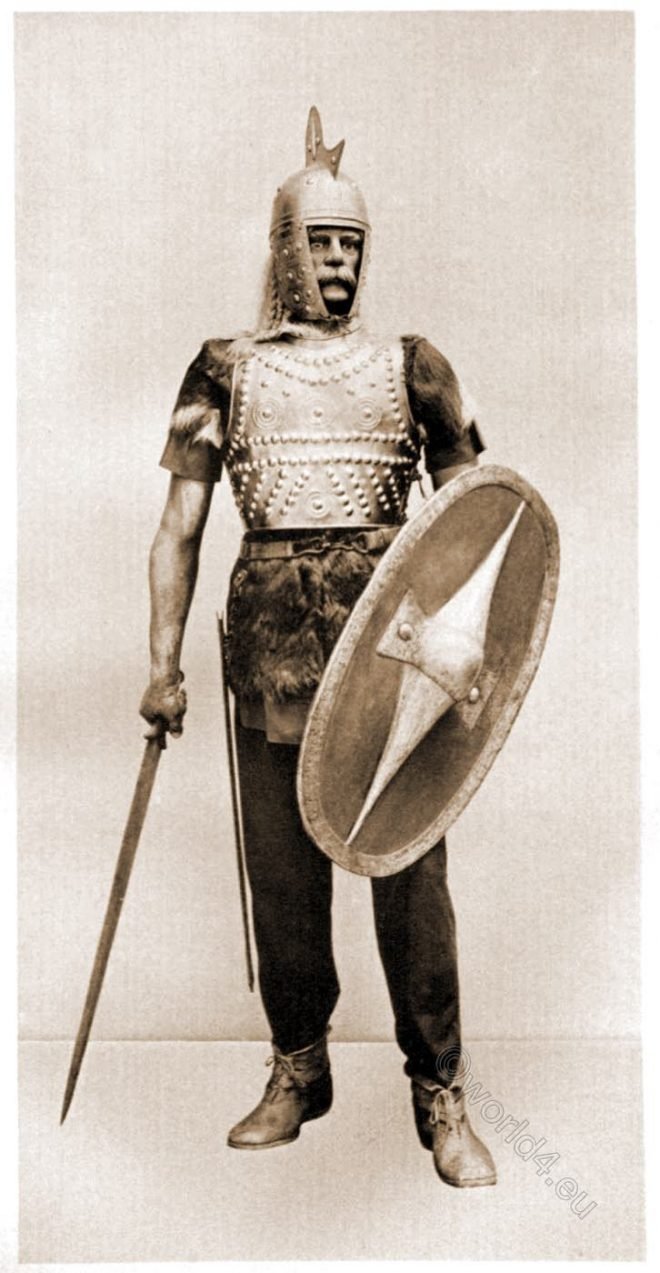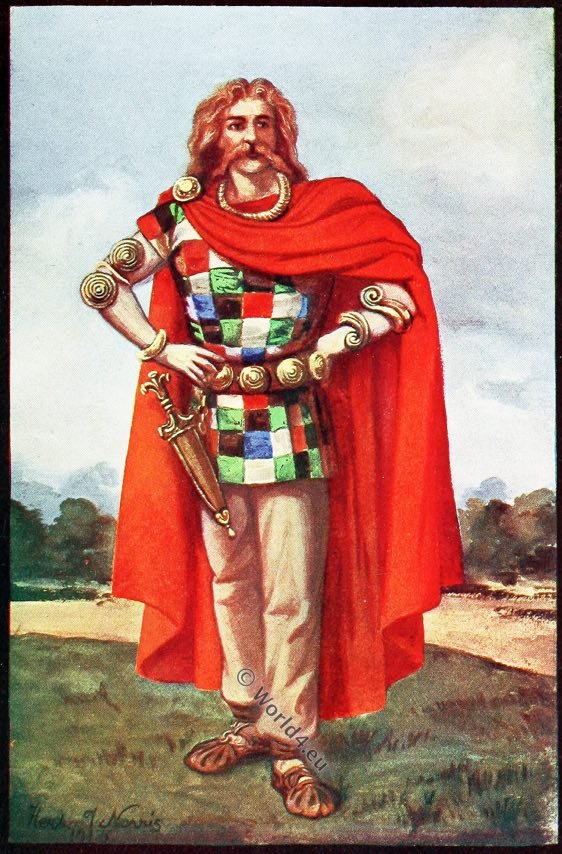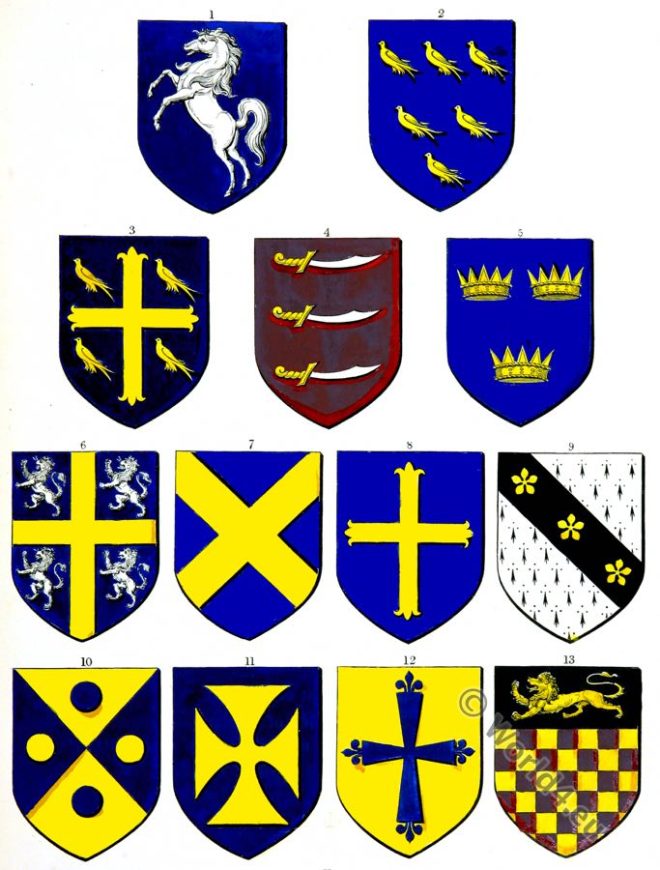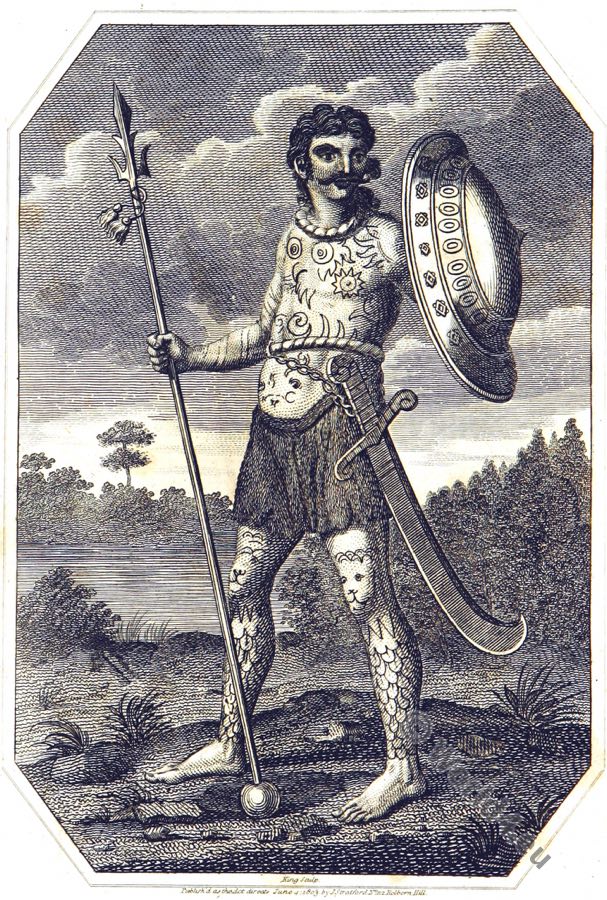Fibula of gold and bronze. Pendant or bulla of gold. Pin and Buckle of of bronze. Discovered at Wingham, near Canterbury, in 1843.
Tag: Celtic
Reconstructed Gallic warrior from about 400-200 B.C.
Gallic warrior from about 400-200 before Christ. Reconstructed after antique sculptures and original finds. Gimbel’s weapons collection.
Gauls. The inhabitants of Gaul before the Roman conquest.
Gauls. Male and female types. Gallic chief. Merovingian chief. Frankish warrior with the Scamasax. Farmers. Flag Bearer. Horsemen. Warrior types of the Salian Franks. The bardocucullus. The carnyx, war trumpet.
Gallic Headdresses. Merovingian.
Gallic Headdresses. Merovingian fashion era. Part XII. – GAUL Plate 7.
The comfortable costumes of the fashionable Gallic women.
Carvings on Gallo-Roman tombs show the fashionable gallic women dressed in the penula, sometimes they have an apron over a very short tunic.
The dress of the Ancient Britons. The druidical robe.
British costume. The Britons. The druidical robe. Civil dress. The Sagum. The Tunic
Britannia Saxonica. Chronology of the Anglo-Saxons.
The Saxon Heptarchy in England. A map of Britain during the Saxon octarchy. ARMS OF THE ANGLO-SAXON KINGS.
Albion. Ancient Britons. Fashion History of England.
The Cimmerii or Cimbrians and the Celtae or Celts, who wandered from the shores of the Thracian Bosphorus to the northern coasts of Europe.
Ancient inhabitants of France. The Land of the Celts or Gauls.
WHAT we now call France or the “land of the Franks” was formerly termed Gaul,* the “land of the Celts,”
Britain under Roman rule. Celt and Roman. England 43 BC to 440 AD.
The United Kingdom, known in antiquity as Britain (ie the territories of present-day England to Hadrian’s Wall, Cornwall and Wales), was from 43 BC to 440 AD, under Roman rule.










